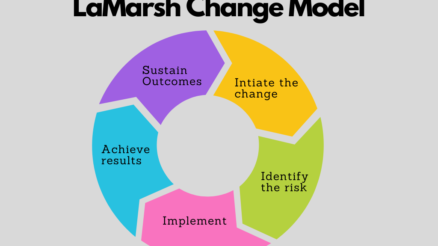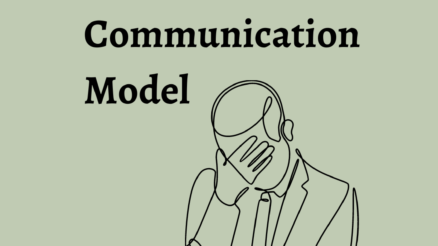Organizational change is a challenging and complex process and it always requires careful planning and execution to achieve desired outcomes.
One framework that has proven to be useful in guiding successful change initiatives is the Beckhard and Harris Change Formula.
Developed by Richard Beckhard and David Harris in the 1980s, this formula provides a simple yet powerful approach to change management. It helps organizations to identify the key factors that contribute to successful change and navigate the obstacles that can impede progress.
In this blog post, we will take a closer look at the Beckhard and Harris Change Formula, exploring its purpose, components, and practical applications in real-world change initiatives.
Whether you are an organizational leader, manager, or team member, understanding the Change Formula can help you to become a more effective agent of change and drive meaningful transformation within your organization.
Why applying a framework is important to implement organizational change?
Applying a clear framework for implementing the process of organizational change is crucial for several reasons. A clear framework provides a roadmap for change that outlines the steps, processes, and activities required to achieve the desired outcomes. This helps to ensure that all stakeholders understand the direction, goals, and objectives of the change initiative.
Using a framework facilitates communication between stakeholders and create a shared understanding of the change initiative. This helps to reduce confusion, minimize resistance, and increase collaboration between teams.
A clear framework provides a consistent approach for implementing change across the organization. This ensures that all departments and teams are working towards a common goal and that the change initiative is not fragmented or inconsistent.
All of these reasons increase the chances of success and ensures that the change initiative is aligned with the organization’s strategic goals and objectives.
The Beckhard and Harris Change Formula
The Beckhard and Harris Change Formula is a simple and widely used framework for understanding and managing organizational change.
The Beckhard and Harris Change Formula is a framework used to evaluate the potential success of a change initiative in an organization. It is expressed as follows:
D x V x FS > R
Where:
- D = Dissatisfaction with the status quo
- V = Vision of a desired future state
- FS = First Steps towards achieving the vision
- R = Resistance towards change
The formula states that change occurs when the product of dissatisfaction with the current state (D), a clear vision of a desired future state (V), the first steps towards that future state (FS), is greater than the resistance to change (R).
Let’s explore each element in more detail:
Dissatisfaction (D)
The first element of the formula refers to the level of dissatisfaction with the current state of affairs in the organization. This dissatisfaction can stem from a variety of sources, including declining performance, employee complaints, customer feedback, or external factors such as competition or market changes. The greater the dissatisfaction with the current state, the more likely people will be motivated to change.
Vision (V)
The second element of the formula refers to the clear and compelling vision of a desired future state. A well-articulated vision provides a clear picture of what the organization hopes to achieve and inspires people to work towards that future state. The vision should be communicated effectively to all stakeholders to create a shared understanding and buy-in.
First Steps (FS)
The third element of the formula refers to the concrete and practical steps that are taken towards achieving the vision. These first steps should be specific, measurable, achievable, relevant, and time-bound (SMART) and should provide a clear pathway towards achieving the desired future state. The first steps should be communicated clearly to all stakeholders to ensure that everyone is working towards the same goal.
Resistance (R)
The fourth element of the formula refers to the resistance to change that exists within the organization. Resistance can come from a variety of sources, including fear of the unknown, lack of trust in leadership, or concerns about job security. Resistance can be overcome by addressing the underlying concerns and communicating the benefits of the change initiative.
The formula indicates that the product of dissatisfaction, vision, and first steps towards achieving the vision must be greater than the resistance to change. In other words, the level of dissatisfaction and the clarity of the vision must be high enough, and the first steps must be concrete and achievable enough, to overcome the expected resistance to change. If any of these elements are weak, the change initiative is less likely to succeed.
Example of using Bechard and Harris Change Formula
Here’s an example of how the Beckhard and Harris Change Formula might be used in practice:
Suppose a company is planning to implement a new performance management system. The company has identified that the current system is outdated and not meeting the needs of the organization, and that a new system is necessary to improve performance and increase employee engagement.
Dissatisfaction with the status quo: The company conducts a survey of employees to assess their level of dissatisfaction with the current performance management system. The survey reveals that many employees are frustrated with the current system and feel that it is unfair and not helpful in improving performance.
Vision of a desired future state: The company creates a clear and compelling vision of the new performance management system. The vision includes features such as regular feedback and coaching, transparent and objective performance evaluations, and opportunities for employee development and growth.
First steps towards achieving the vision: The company identifies several initial steps towards implementing the new performance management system. These include developing a new performance evaluation framework, training managers on how to give effective feedback and coaching, and communicating the benefits of the new system to employees.
Resistance to change: The company anticipates that some employees and managers may resist the change due to fear of the unknown or concerns about the additional workload that may come with the new system.
Using the Beckhard and Harris Change Formula, the company assesses whether the initiative is likely to succeed. If the level of dissatisfaction with the current system is high enough, and the vision of the new system is clear and inspiring, and the initial steps are concrete and achievable, then the product of these factors must outweigh the anticipated resistance to change. If the product is greater than the resistance to change, the initiative is more likely to succeed.
Advantages of Bechard and Harris Change Formula
Here are some potential advantages of using the Beckhard and Harris Change Formula:
Provides a structured approach
The formula provides a structured approach to change management, which can be useful in ensuring that all necessary factors are considered and addressed.
Focuses on critical factors
The formula emphasizes the importance of dissatisfaction, vision, and first steps towards achieving the vision, which are critical factors in driving successful change initiatives.
Helps identify potential barriers
By explicitly considering resistance to change, the formula helps identify potential barriers to success and prompts organizations to develop strategies for overcoming those barriers.
Facilitates communication
The formula can facilitate communication among stakeholders by providing a shared language and framework for discussing change initiatives.
Helps evaluate the potential success of a change initiative
The formula can be used to evaluate the potential success of a change initiative before it is implemented. By assessing the level of dissatisfaction, clarity of the vision, and feasibility of the first steps, organizations can make more informed decisions about whether to move forward with a change initiative and how to allocate resources to ensure its success.
Disadvantages of Bechard and Harris Change Formula
Here are some potential disadvantages of using the Beckhard and Harris Change Formula:
Simplistic approach
The formula provides a simple approach to change management, which may oversimplify the complexity of change initiatives in practice.
Limited applicability
The formula may not be applicable to all types of change initiatives, and may be more suitable for certain types of organizational changes, such as process improvements or system implementations, rather than broader cultural or strategic changes.
Lack of context
The formula does not account for the unique context or culture of an organization, which may influence the success of a change initiative. Therefore, organizations need to adapt the formula to fit their specific circumstances.
Overemphasis on early stages
The formula places a lot of emphasis on the early stages of a change initiative, such as dissatisfaction, vision, and first steps, but may not adequately address the ongoing challenges of implementing and sustaining change.
Ignores feedback
The formula does not incorporate feedback or iterative learning, which is an important part of the change management process. Change initiatives often require adjustment and refinement over time, and the formula may not account for this ongoing process.
Final Words
Beckhard and Harris Change Formula is a useful tool for planning and evaluating change initiatives. It provides a structured approach to change management, emphasizes critical factors such as dissatisfaction, vision, and first steps, and helps identify potential barriers to success. However, like any framework, it has its limitations, including its simplicity, limited applicability, lack of context, overemphasis on early stages, and lack of feedback incorporation. Therefore, organizations should use the formula as a starting point for change management, while adapting it to fit their specific needs and circumstances, and incorporating feedback and iterative learning as necessary.



